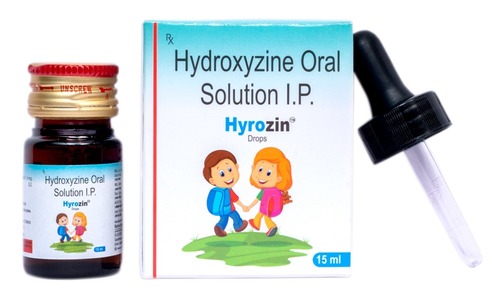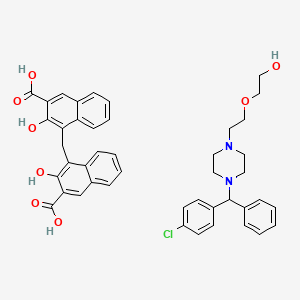
Hydroxyzine, a medication primarily used for its antihistamine properties, serves various medical purposes. In this article, we delve into the concept of minimum quantity concerning and explore its significance in global healthcare.
Introduction to Hydroxyzine
Hydroxyzine belongs to the class of medications known as antihistamines. It works by blocking the effects of histamine, a substance produced by the body during allergic reactions. Commonly sold under the brand names Atarax and Vistaril, is available in different formulations, including tablets, capsules, and syrups.
Understanding Minimum Quantity
What Does Minimum Quantity Mean?
Minimum quantity refers to the smallest amount of a medication that can be dispensed at one time. This concept is crucial in healthcare settings as it ensures appropriate dosing and prevents wastage of medications.
Hydroxyzine: A Brief Overview
Hydroxyzine is widely recognised for its effectiveness in managing various medical conditions. It is commonly prescribed for the treatment of anxiety disorders, including generalised anxiety disorder and tension-type anxiety. Additionally, is used to alleviate itching and allergic reactions caused by conditions such as chronic urticaria and atopic dermatitis.
Treatment of Anxiety Disorders
acts as an anxiolytic, providing relief from symptoms such as nervousness, tension, and apprehension. Its sedative properties help in calming the central nervous system, promoting relaxation and reducing anxiety levels.

Management of Itching and Allergic Reactions
In cases of severe itching or allergic reactions, can be administered to alleviate discomfort. By blocking the action of histamine, it helps in reducing itching, swelling, and redness associated with allergic responses.
Factors Affecting Hydroxyzine Minimum Quantity
Regulatory Guidelines
Minimum quantity regulations vary from country to country, depending on factors such as healthcare policies, pharmaceutical regulations, and drug scheduling. These guidelines dictate the permissible amount of that can be dispensed per prescription.
Pharmaceutical Practices
Pharmaceutical companies also play a significant role in determining minimum quantity standards for hydroxyzine. Factors such as packaging size, dosage forms, and market demand influence the production and distribution of the medication.
Variations in Minimum Quantity by Region
The minimum quantity of hydroxyzine available in different parts of the world can vary significantly. While some regions may allow smaller quantities for personal use, others may impose restrictions to prevent misuse or abuse of the medication.
Challenges in Accessing Hydroxyzine
Despite its widespread use, accessing can be challenging in certain regions due to regulatory barriers, limited availability, and affordability issues. Patients may encounter difficulties in obtaining the required quantity of the medication for their treatment needs.
Importance of Minimum Quantity in Healthcare
Ensuring an appropriate minimum quantity of is essential for promoting patient safety, optimising treatment outcomes, and minimising medication errors. By adhering to established guidelines, healthcare professionals can enhance the quality of care provided to patients.
Future Prospects and Trends
As healthcare systems continue to evolve, the regulation and availability of hydroxyzine are expected to undergo further changes. Advancements in pharmaceutical technology and drug delivery systems may lead to improved formulations and dosage options for hydroxide users.

Understanding Hydroxyzine
a medication primarily used for the treatment of anxiety and itchiness due to allergic reactions, belongs to a class of drugs known as antihistamines. acts by blocking histamine receptors, thereby reducing allergic reactions such as itching, swelling, and redness. Moreover, it exerts analytic effects by acting as a central nervous system depressant, promoting relaxation and alleviating anxiety symptoms. Hydroxyzine works by antagonising histamine receptors, thereby inhibiting the action of histamine, a compound responsible for allergic responses. By blocking histamine’s effects, mitigates symptoms such as itching, sneezing, and runny nose commonly associated with allergic reactions.
Importance of Minimum Quantity
The establishment of a minimum quantity forholds paramount importance in ensuring its safe and effective use. The Significance of Establishing a Minimum Quantity Setting a minimum quantity helps prevent underdosing, which may lead to inadequate therapeutic effects and treatment failure. Conversely, it aids in avoiding excessive dosing, which can increase the risk of adver
Determining Minimum Quantity
Determining the minimum quantity of hydroxyzine necessitates comprehensive evaluation encompassing regulatory guidelines, clinical research, and expert consensus. Regulatory Guidelines Regulatory authorities play a crucial role in establishing minimum quantity requirements for pharmaceutical products, including . These guidelines consider factors such as pharmaceutics, thermodynamics, safety data, and clinical trial results to ensure the medication’s safe and effective use. Clinical Research and Studies Clinical research, including pharmaceutical studies, dose-response trials, and safety assessments, provides valuable insights into the optimal dosage range and minimum effective dose of. These studies involve rigorous evaluation of drug efficacy, venerability, and safety across diverse patient populations, aiding in dose optimisation and minimum quantity determination.
Challenges in Determining Minimum Quantity
Despite concerted efforts, several challenges hinder the precise determination of the minimum quantity for hydroxyzine. Lack of Consensus Among Experts The lack of consensus among healthcare professionals and researchers regarding the optimal dosage range and minimum effective dose poses a significant challenge. Varying interpretations of clinical trial data, differences in patient populations, and conflicting evidence contribute to this lack of consensus, necessitating further research and deliberation. Variability in Patient Responses Individual variability in patient responses to further complicates minimum quantity determination. Factors such as age, weight, comorbidity, concomitant medications, and genetic predispositions influence drug metabolism, efficacy, and venerability, requiring personalised dosing approaches.
Conclusion
In conclusion, hydroxyzine plays a vital role in the management of anxiety disorders, itching, and allergic reactions worldwide. Understanding the concept of minimum quantity is crucial for ensuring safe and effective use of this medication in healthcare settings. By addressing regulatory challenges and promoting access to, healthcare providers can better meet the needs of patients requiring this essential medication.

/bnn/media/media_files/ac755acacad324127b604c60abe6b6d354970ac065e68192e9b942c9be15d093.jpg)